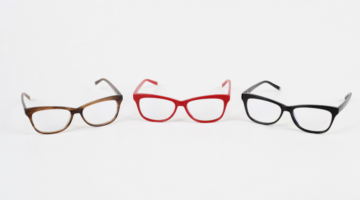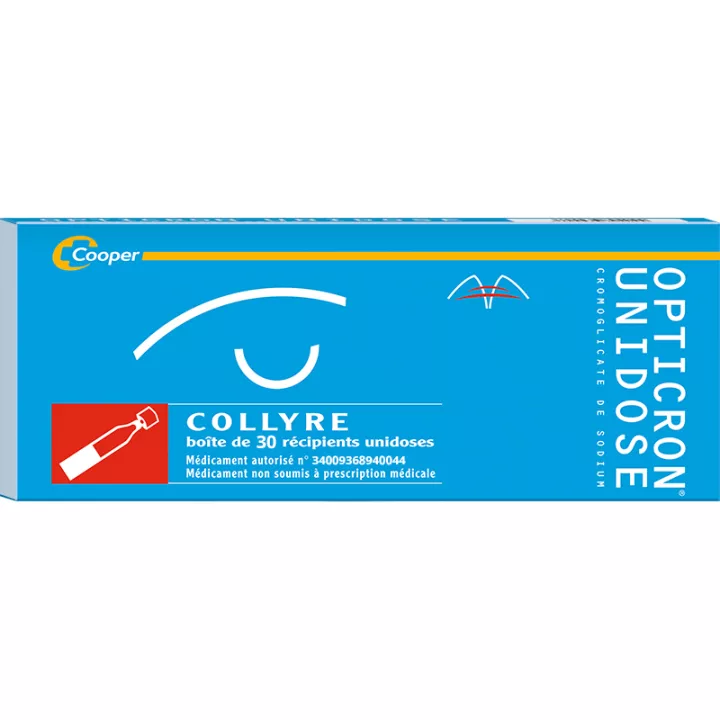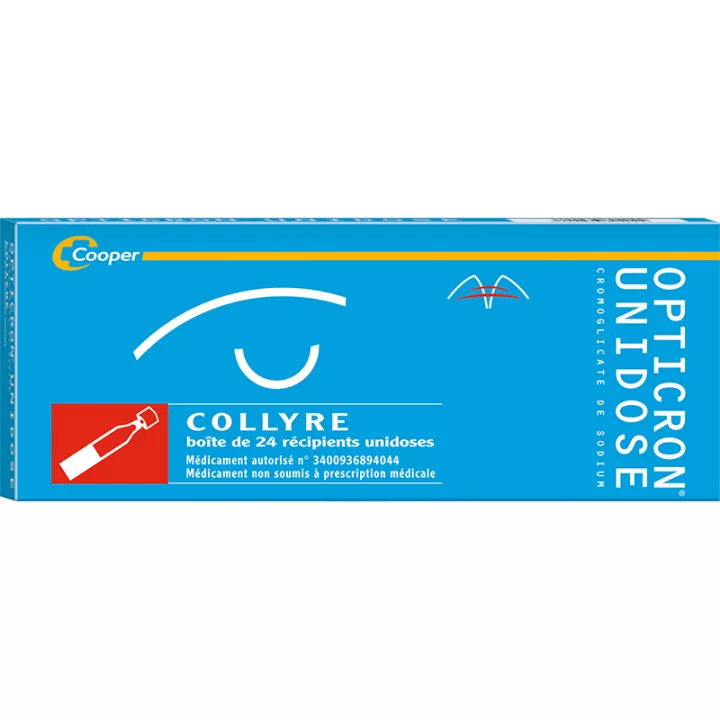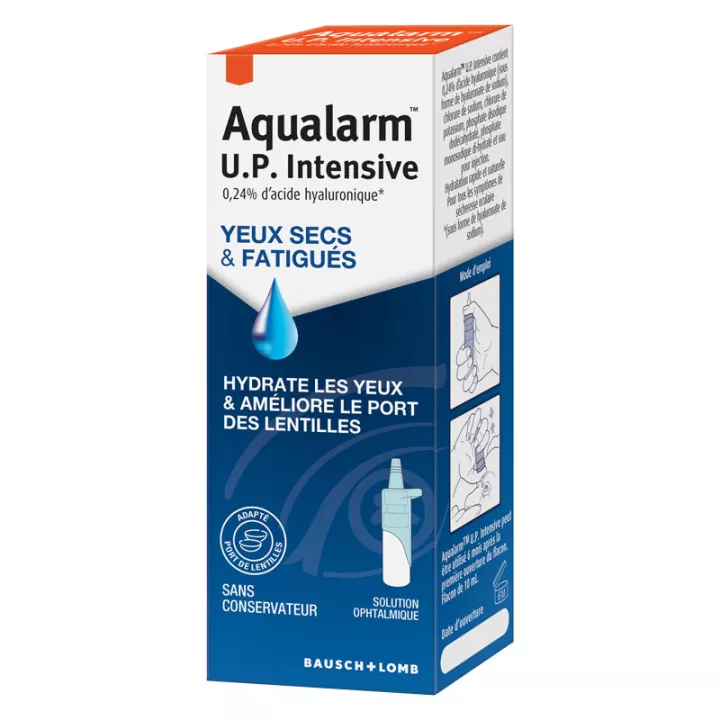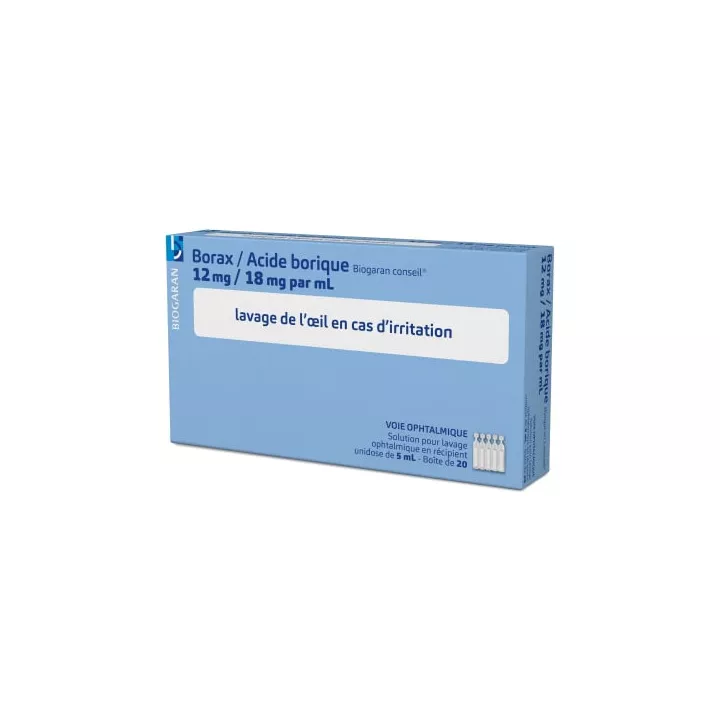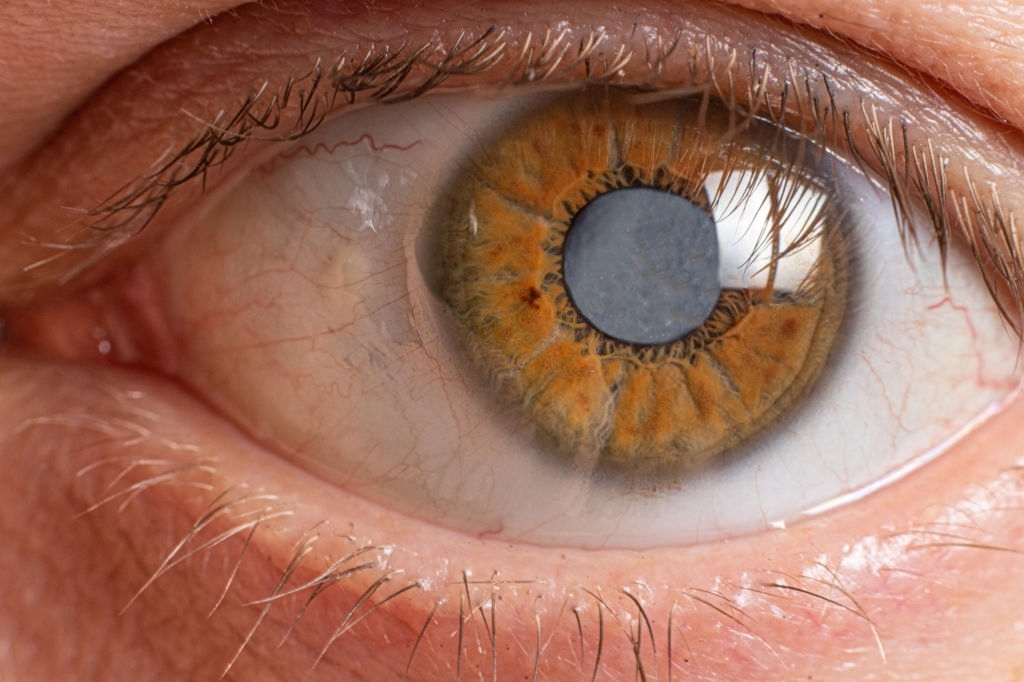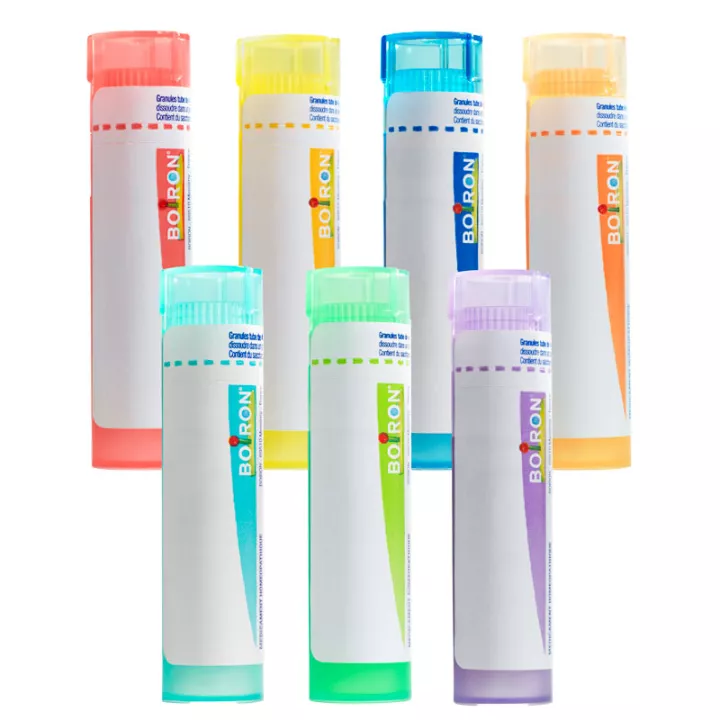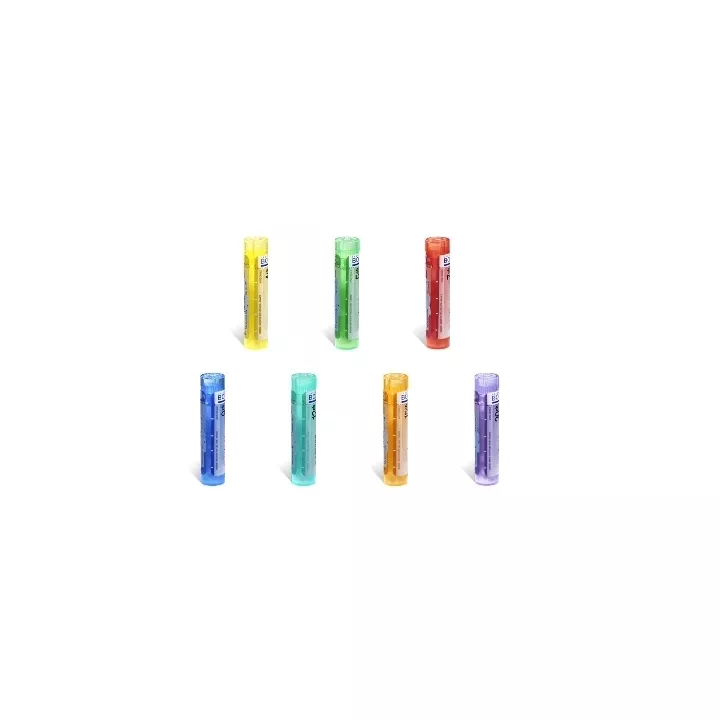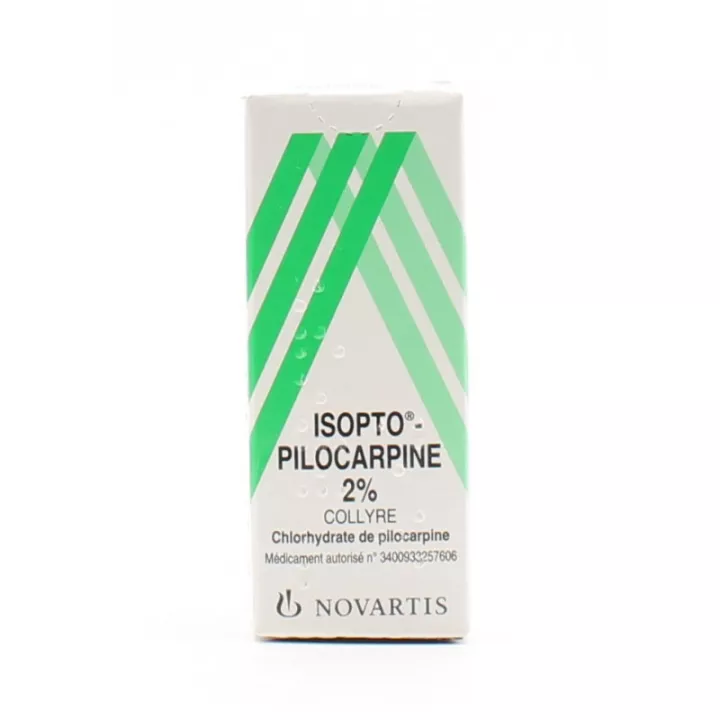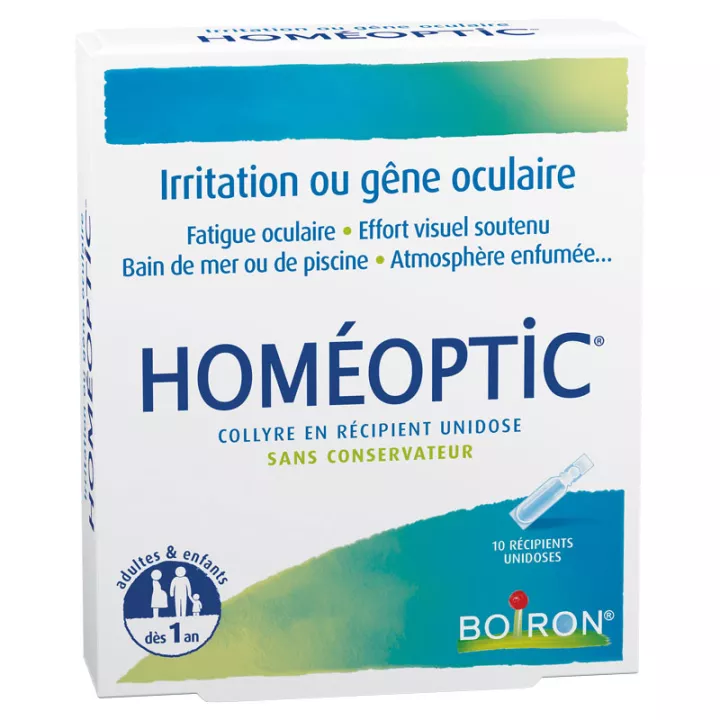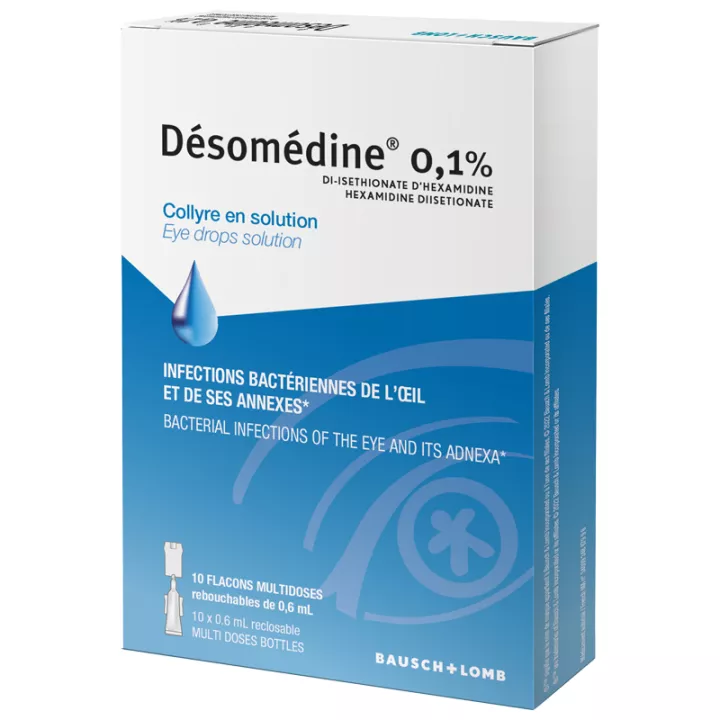NOTICE
ANSM - Updated on: 08/08/2013
Name of the medicinal product
OPTICRON UNIDOSE, eye drops in single dose container
Sodium Cromoglycate
framed
Read this leaflet carefully before you start taking this medicine. It contains important information for your treatment.
If you have any further questions, ask your doctor or pharmacist.
· Keep this leaflet, you may need to read it again.
· If you need more information and advice, ask your pharmacist.
· If symptoms worsen or persist, consult your doctor.
· If you notice any side effects not listed in this leaflet, or if you experience any of the effects listed as serious, please tell your doctor or pharmacist.
Review summary
In this notice :
1. WHAT IS OPTICRON UNIDOSE, eye drops in single-dose containers AND WHAT CASES IS IT USED FOR?
2. BEFORE YOU USE OPTICRON UNIDOSE, eye drops in single dose containers?
3. HOW TO USE OPTICRON UNIDOSE, eye drops in a single-dose container?
4. WHAT ARE POSSIBLE SIDE EFFECTS?
5. HOW TO STORE OPTICRON UNIDOSE, eye drops in a single-dose container?
6. ADDITIONAL INFORMATION
1. WHAT IS OPTICRON UNIDOSE, eye drops in single-dose containers AND WHAT CASES IS IT USED FOR?
Pharmacotherapeutic group
ANTI-ALLERGIC LOCAL
(S = sensory organ)
Therapeutic indications
This eye drops are indicated in case of allergic eye disease (allergic conjunctivitis).
2. BEFORE YOU USE OPTICRON UNIDOSE, eye drops in single dose containers?
List of information needed before taking the medication
Not applicable.
Cons-indications
Never use OPTICRON UNIDOSE, eye drops in a single-dose container in the following case:
· A history of allergy to any of the components of eye drops.
IN CASE OF DOUBT, IT IS ESSENTIAL TO ASK FOR THE OPINION OF YOUR DOCTOR OR YOUR PHARMACIST
Precautions for use; special warnings
Take special care with OPTICRON UNIDOSE, eye drops in single dose containers:
Precaution of use
NEVER LEAVE TO CHILDREN.
DO NOT INJECT, DO NOT SWALLOW.
Do not exceed recommended dosage.
If there is no improvement as in the case of persistent symptoms, take a medical opinion.
In case of concomitant treatment with another eye drops, wait 15 minutes between each instillation.
Discard unidose after use.
Do not store unidose for further instillation.
IN CASE OF DOUBT DO NOT HESITATE TO REQUEST THE NOTICE OF YOUR DOCTOR OR PHARMACIST.
Interaction with other medicines
Taking or using other medicines
In case of concomitant treatment with another eye drops, wait 15 minutes between each instillation.
If you are taking or have recently taken any other medicines, including medicines obtained without a prescription, talk to your doctor or pharmacist.
Interactions with food and beverages
Not applicable.
Interactions with Herbal Medicines or Alternative Therapies
Not applicable.
Use during pregnancy and lactation
Pregnancy and breast feeding
Ask your doctor or pharmacist for advice before taking any medicine.
Sport
Not applicable.
Effects on ability to drive or use machines
Driving and using machines
Transient visual discomfort may be felt after instillation of eye drops into solution.
In this case, wait for the end of the symptoms to drive or use a machine.
List of excipients with known effect
Not applicable.
3. HOW TO USE OPTICRON UNIDOSE, eye drops in a single-dose container?
Instructions for proper use
Not applicable.
Dosage, Mode and / or route (s) of administration, Frequency of administration and Duration of treatment
Dosage
· Adult and child: depending on the severity of the symptoms, instil 1 drop in each eye, 2 to 6 times a day, at regular intervals.
In children a medical opinion is necessary.
· Do not exceed recommended dosage.
IN ALL CASES CONFORM TO THE ORDER OF YOUR DOCTOR STRICTLY.
Method and route of administration
Local track.
IN EYE INSTILLATION
Wash your hands thoroughly before proceeding with instillation.
Open the bag. Detach a single dose. Carefully close the bag containing the other unidoses by folding the open side. Open the unidose by turning the flat top.
Each unidose contains a sufficient amount of eye drops to treat both eyes.
Insert 1 drop of eye drops into the conjunctival sac of the diseased eye, looking upwards, and pulling the eyelid down slightly and avoiding contact of the tip with the eye or eyelids.
Discard unidose after use. Do not store for future use.
Space the 2 to 6 daily instillations.
In case of concomitant treatment with another eye drops, wait 15 minutes between each instillation.
Duration of the treatment
Do not prolong treatment without medical advice.
If there is no improvement as in the case of persistent symptoms, take a medical opinion.
Symptoms and Instructions for Overdose
If you take more OPTICRON UNIDOSE, eye drops in single dose containers than you should:
In case of overdosage, rinse with sterile saline solution.
Instructions for omission of one or more doses
Not applicable.
Risk of withdrawal syndrome
Not applicable.
4. WHAT ARE POSSIBLE SIDE EFFECTS?
Description of adverse reactions
Like all medicines, OPTICRON UNIDOSE, eye drops in unidose containers are likely to have side effects, although not everyone is exposed to them.
Possibility of an allergic reaction to the components of the product.
If you notice any side effects not listed in this leaflet, or if any of the side effects gets serious, contact your doctor or pharmacist.
5. HOW TO STORE OPTICRON UNIDOSE, eye drops in a single-dose container?
Keep out of the reach and sight of children.
Expiration date
Do not use OPTICRON UNIDOSE, eye drops in a single-dose container after the expiry date which is stated on the outer packaging.
Storage conditions
Store at a temperature not exceeding 25 ° C. Keep the package in the outer carton in order to protect from light.
If necessary, warnings against visible signs of deterioration
Medicines should not be disposed of via wastewater or household waste. Ask your pharmacist what to do with unused medications. These measures will help protect the environment.
6. ADDITIONAL INFORMATION
Full list of active substances and excipients
What does OPTICRON UNIDOSE, eye drops in single dose contain?
The active substance is:
Sodium Cromoglycate ............................................... .................................................. ................. 0.007 g
For single-dose containers
The other components are:
sodium chloride, water for injections.
Pharmaceutical form and content
What is OPTICRON UNIDOSE, eye drops in a single-dose container and contents of the pack?
This medication is in the form of eye drops in a single-dose container of 0.35 ml.
Box of 10, 20, 24 or 100 single-dose containers.
Name and address of the marketing authorization holder and the holder of the manufacturing authorization responsible for the release of the lots, if different
Holder
FRENCH PHARMACEUTICAL COOPERATION
Place Lucien Auvert
77020 MELUN Cedex
exploiting
FRENCH PHARMACEUTICAL COOPERATION
Place Lucien Auvert
77020 MELUN CEDEX
Maker
UNITHER LABORATORY
Industrial Space North
151 rue André Durouchez
CS 28028
80084 AMIENS CEDEX 2
or
RHONE POULENC RORER
72 LONDON ROAD
HOLMES CHAPEL, CREWE
CHESCHIRE CW4 8BE
UK
Names of the medicinal product in the Member States of the European Economic Area
Not applicable.
Date of approval of the notice
The last date on which this leaflet was approved is {date}.
AMM under exceptional circumstances
Not applicable.
Internet Information
Detailed information on this medicine is available on the Afssaps website (France).
Information for health professionals only
Not applicable.
Other
Not applicable.
